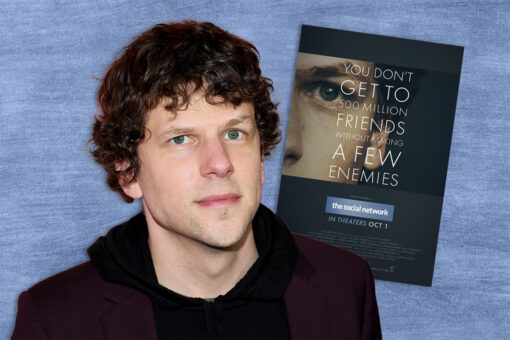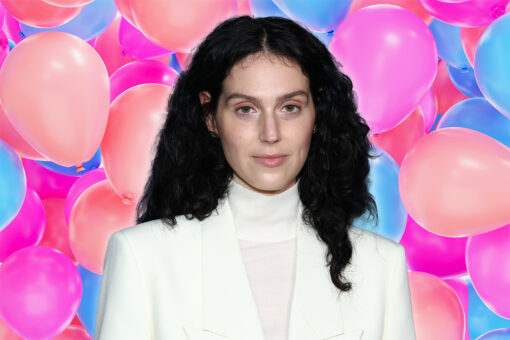My original passport has a picture of me at 3 years old, long-haired and gap-toothed, smiling at the camera. The only stamps it holds mark two round-trips to and from Israel, when I was 3 and 4, there to visit my father’s family in the country where he was born. This passport is a relic that documents not only my lifelong struggle with a hairline cowlick I inherited from my mother — but the gender I was assigned at birth and my full legal name, two identifiers that I do not see myself in.
Now, I’m in the process of getting a new passport. And beyond the paperwork and fees, this application has forced me to consider the two very important pieces of myself: my Jewish identity and my queer identity.
What I can surmise from the stamps in my old passport is that we had gone to see family on two very important occasions. The first trip, in 1997, was for my brother’s first birthday. He was named after my saba, and it was important that my father’s family meet him. It would be my first time going to Israel, too. The second trip, in 1998, was for my aunt and uncle’s wedding. A few years later, that same aunt would call me and my brothers “bastard children,” as our mother never converted to Judaism. The echo of her declaration still sits with me on the days I do not feel Jewish enough.
I am proud of my Jewish identity. I hold within me a precious gift going back generations. My safta and saba are Yemeni Jews. Upon writing this, all but one Yemeni Jew has left Yemen due to persecution. My father, growing up in Israel, desired a different life for himself and immigrated to the U.S. when he was in his early 20s. Here, he met my mother, a white Christian from Indiana. I am a granite rock skipped across land and water to arrive on the limestone shores of Florida.
There was an unspoken battle in my household that was split down religious and racial identity. To acknowledge your Jewish and Israeli roots would mean to dwarf your white American Christian roots. To acknowledge the latter would dash out your Jewish one. There was never room for both. Had my parents been open about their identities and beliefs, respected one another and endeavored to bridge the gap between ideologies, I may have had a different upbringing. But now I recognize myself as Middle-Eastern American and go to temple while my brothers and mom identify as white and go to church. From what I understand, my father also describes himself as white despite not being the American convention of “white.”
But my main deliberation with my passport application was not my race, but my gender. I am nonbinary; queer in a general nonspecific way in conversation, but nonbinary if we are to get into the nitty gritty. This has always been the case for me. I grew up uncomfortable with the rigid gender roles prescribed by each parent and their respective culture. There were days I would sneak into my brother’s room and try on his clothes, packing my underwear to make things look “right.” But at that point in my life I had no language or an audience for these behaviors, so much of them went largely unnoticed or disregarded until I moved out of my parent’s home.
In the years of gender exploration that followed, I believed — wrongly — that I could not be Jewish religiously and queer. There were no examples of people like me readily available. Even now it takes some serious sleuthing to identify the people that exist in this intersection. One day in graduate school a supervisor told me about the Black lesbian writer Audre Lorde and her idea of intersectionality, the term coined by Kimberlé Crenshaw. For my segmented self, Lorde offered an example of what someone could become if they accepted all the bits of themselves. I devoured her work and found myself questioning my goals.
Could I be queer and Jewish?
What do I want out of this?
Over the past few years, I have slowly integrated these pieces of myself — an effort I believe I’ve only just started and have a lifetime to complete. Along the way there are new checkpoints of affirmation: social transition, counseling, failed attempts at hormone replacement therapy, even more counseling. These checkpoints are the departures and arrivals of my gender identity journey kept track by the various medical professionals I have entrusted with my care.
So when I was filling out my passport application and it offered space to self-identify my gender without any medical documentation to support it, I almost instinctively chose “X” out of the three main categories as is currently stands (M, F and X). But before answering this section of the form, I decided to research the international implications of what being X really means. I found that while it is a great sense of affirmation to indicate your identity on your passport, there are many countries that do not accept an X passport without consistently updated qualifying medical documentation and corresponding identification that has the same gender markers. In essence, without also updating my license, birth certificate and getting letters from my medical providers to take with me when I travel, I could be barred entry to their country.
So the question arose again: What do I want out of this?
What do I want out of having a passport, and one that reflects my gender identity?
Ultimately the inspiration behind pursuing a passport was the onslaught of legislation that has swept the United States. As Jews we are no stranger to maintaining out plans: Plan Bs, Cs, and Ds; safety nets for ourselves and our families. I endeavored to get this passport as a step to safety, to ensure that I am not caught in the crosshairs of political figures fighting whether or not I get to live a life of dignity and respect — all stoked by the age old embers of antisemitism and homophobia. While I have resolved the little bits of myself into one whole person, I am still waiting for the world to catch up.
So what comes now in my decision to have flexibility and safety is truly up to me. How I choose to mark my gender and what stamps track my international journey is largely dependent on what makes me, a queer Jew, feel safe.
Ultimately, I cannot say whether what I eventually chose as my gender marker on my passport application is right — just as much as I cannot say whether a Yemeni-Israeli identifying as white is right. My decision was informed not just by my identity, but by the world around me and what I hope for my future. I was required to reflect on what I feel is both authentic and safe — weigh their value in my heart and the socio-political atmosphere I find myself in — and make the declaration that has the best balance.
My new passport will not have my mother’s handwriting on it. It won’t have the stamps that tell the story of my childhood. But it will have a picture of me, the same me, short curly hair still marred by a stubborn cowlick, standing straighter for the binder I wore while taking it.



